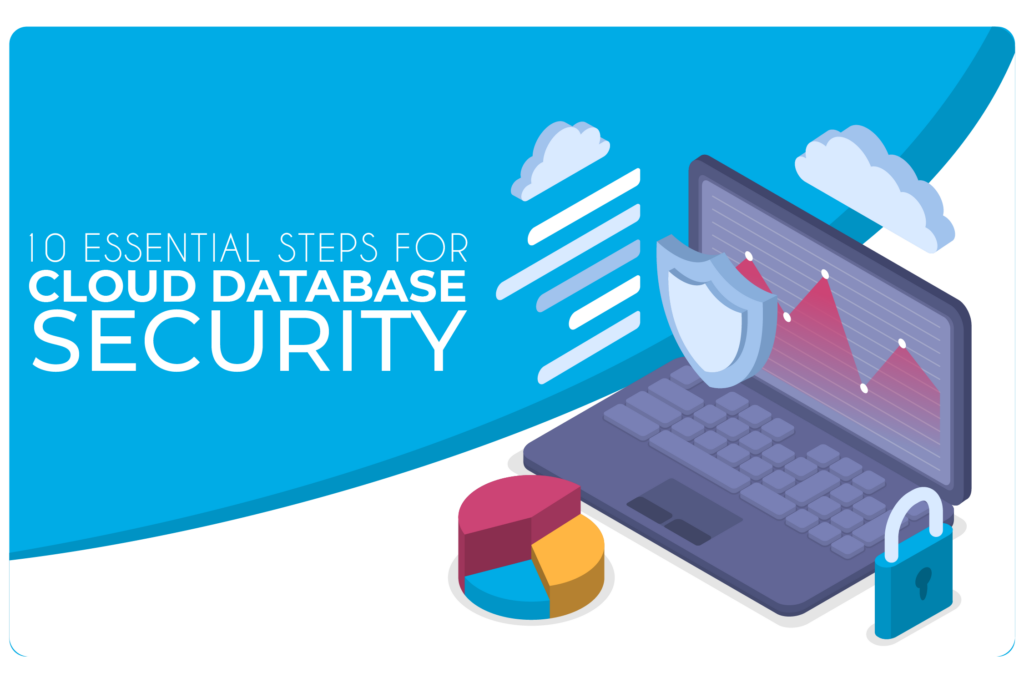

In the cloud era, provisioning a powerful relational database is a matter of minutes. With a few clicks, a fully managed and scalable PostgreSQL or SQL Server instance is ready to use. This ease, however, masks a dangerous truth: the simplicity of provisioning does not translate into automatic security. On the contrary, the speed and abstraction of the cloud make it incredibly easy to make subtle configuration mistakes with catastrophic consequences. A misconfigured S3 bucket can expose the data of millions of customers; a database accidentally left open to the internet can be found and hijacked by ransomware in a matter of hours.
Data security is no longer a topic to be handled by an isolated security team; it has become a fundamental and non-negotiable responsibility for the entire engineering team, from DevOps to SREs and developers. A data breach is not just a security incident; it is the ultimate availability event, with an impact that can destroy customer trust and the company’s reputation. This technical and practical checklist details 10 essential and non-negotiable steps that every engineering team must follow to protect their cloud databases, transforming security from an afterthought into a pillar of your architecture.
1. Implement the Principle of Least Privilege (IAM and Internal Permissions)
The principle of least privilege is the foundation of all data security. It dictates that an entity (be it a user or a service) should only have the minimum permissions necessary to perform its function, and nothing more. In the cloud, this applies to two distinct layers.
- Control Layer (Cloud IAM): Refers to who can manage the database service. Use AWS Identity and Access Management (IAM), Azure RBAC, or Google’s Cloud IAM to control who can create, modify, delete, or restart your database instances. Never use the root account for day-to-day operations. Create specific roles (e.g., DBAdmin, DBAuditor) with restrictive policies. The application team does not need permission to delete the production instance.
- Data Layer (Internal Permissions): Refers to who can access the data within the database. Do not use a single superuser account (like postgres or sa) for all your applications. Create specific database roles for each service or application (e.g., auth_service_role, reporting_service_role) and grant only the necessary permissions (SELECT on certain tables, INSERT on others). This drastically limits the “blast radius” if an application’s credentials are compromised.
2. Encrypt All Data at Rest
Encryption at rest protects your physical data files in case a malicious actor gains access to the underlying storage. In the cloud era, there is no excuse not to enable this.
- How It Works: Cloud providers like AWS, Azure, and Google Cloud make this incredibly simple. When provisioning an instance (like an RDS), just check the “Enable encryption” option. The provider manages the encryption and decryption transparently for your application, using a key management service like AWS Key Management Service (KMS) or Azure Key Vault.
- Why It’s Essential: If a disk is provisioned incorrectly or if there is a failure in the hypervisor’s isolation, encryption is your last line of defense. For many compliance regulations (GDPR, HIPAA), encryption at rest is not optional; it is mandatory. Use customer-managed keys (CMK) for even greater control, allowing you to rotate or revoke keys without depending on the provider.
3. Enforce Encryption of Data in Transit
While encryption at rest protects data on the disk, encryption in transit protects data as it travels over the network, from your application to the database.
- How It Works: This is achieved by forcing the use of SSL/TLS connections. All major managed database services support this. The configuration usually involves two parts: on the server side, the database is configured to require SSL connections (e.g., the rds.force_ssl=1 parameter in AWS RDS for PostgreSQL). On the client side, your connection string needs to specify the SSL mode (e.g., sslmode=verify-full).
- Why It’s Essential: Without SSL/TLS, the data, including passwords and sensitive customer information, travels over the network in plain text. an attacker who manages to get a position in your network (a “man-in-the-middle”) can capture and read all your database traffic. Forcing SSL/TLS closes this critical vulnerability.
4. Isolate the Database from the Internet
This is, perhaps, the most important step of all. A database should never, under any circumstances, have a public IP address or be directly accessible from the internet.
- How It Works: Use your cloud provider’s virtual networking tools.
- VPC and Subnets: Provision your database in a Virtual Private Cloud (VPC) and, crucially, in private subnets. Private subnets are those that do not have a direct route to an Internet Gateway.
- Security Groups / Network Security Groups (NSGs): Act as a firewall at the instance level. Configure the rules to allow incoming traffic only on the database port (e.g., 5432 for PostgreSQL) and only from specific sources, such as the Security Groups of your application instances. The default rule should be “deny all.”
- Private Link / Private Endpoints: For access from other VPCs or from on-premises environments, use services like AWS PrivateLink or Azure Private Link. They create a private and secure endpoint within your network, preventing traffic from passing over the public internet.
- Why It’s Essential: The internet is constantly being scanned by bots looking for open databases with weak passwords. Exposing your database publicly is an invitation to disaster. Network isolation is your strongest perimeter defense.

5. Enable and Centralize Detailed Auditing
If the worst happens, you need to be able to answer the question “who did what and when?”. Auditing does not prevent an attack, but it is absolutely crucial for detection, incident response, and forensic analysis.
- How It Works: Enable your database’s native audit logs (e.g., pgaudit for PostgreSQL, SQL Server Audit). Configure them to log critical events such as logins (successful and failed), permission changes (DDL), and, if necessary, access to sensitive tables (DML). More importantly, do not leave these logs only on the server. Configure them to be exported and centralized in a logging service like Amazon CloudWatch Logs or Azure Monitor Logs.
- Why It’s Essential: an attacker who gains access to the database may try to delete the local logs to cover their tracks. By centralizing the logs in a separate and immutable system, you preserve the audit trail. Integrating these logs with SIEM (Security Information and Event Management) tools or threat detection tools (like Amazon GuardDuty) allows for the creation of alerts for suspicious activities, such as an abnormal number of login failures.
6. Protect the Application Against SQL Injection
Database security is not the sole responsibility of the SRE or DBA. The most common and devastating security flaw, SQL Injection (SQLi), is a vulnerability in the application code.
- How It Works: A SQLi vulnerability occurs when user input is directly concatenated into a SQL string, allowing an attacker to “inject” their own SQL code. The main defense is to never build queries with string concatenation.
- How to Prevent It:
- Use Prepared Statements (Parameterized Queries): This is the strongest defense. The SQL code and the user data travel to the database separately, making it impossible for the data to be interpreted as code.
- Use an ORM (Object-Relational Mapper): Tools like Hibernate, Entity Framework, or SQLAlchemy generally use parameterized queries under the hood, offering a high level of protection by default.
- Validate and Sanitize All Inputs: Even with the defenses above, always treat user input as untrusted.
7. Manage Credentials with a Secrets Vault
Database credentials (username and password) are the keys to your kingdom. They should never be stored in plain text in the source code, in configuration files, or in environment variables.
- How It Works: Use a dedicated secrets management service, such as AWS Secrets Manager, Azure Key Vault, or HashiCorp Vault. Your application, upon startup, authenticates to the secrets vault (usually using an IAM role) and retrieves the database credentials dynamically.
- Why It’s Essential: This decouples the credentials from the code. It allows for the automatic rotation of passwords without the need for a new application deployment, a crucial security practice. If a developer leaves the company or a code repository is exposed, the credentials are not compromised.
8. Ensure Secure Backups and Test Them Regularly
Backups are not just a disaster recovery tool; they are a critical security tool against ransomware attacks.
- How It Works: All managed database services offer automated backups. Make sure that:
- They are enabled with an appropriate retention policy.
- The backups themselves are encrypted (using a KMS key, for example).
- Consider replicating backups to another cloud region as protection against a regional disaster.
- Why Testing is Essential: An untested backup is just a hope, not a strategy. Perform regular restoration tests (at least quarterly) to ensure that you can, in fact, restore the data in an acceptable time (measuring your RTO – Recovery Time Objective) and that the restored data is consistent and usable.
9. “Harden” the Database Configuration
Cloud providers offer a good default configuration, but it can and should be “hardened.”
- How It Works: Review your database’s configuration parameters. Disable features you don’t use to reduce the “attack surface.” If possible, avoid using the default ports (e.g., 5432, 1433), as they are the first targets of automated scans. Install only the strictly necessary extensions. Follow the CIS (Center for Internet Security) hardening guides for your specific database engine.
- Why It’s Essential: Every enabled feature is a potential door for a vulnerability. By minimizing the attack surface, you reduce the probability of an exploit.
10. Continuously Monitor for Anomalous Activities
Security is not a state; it is a process. Early detection is the key to mitigating the impact of an incident.
- How It Works: In addition to auditing, use tools that can analyze your workload’s behavior and detect anomalies. An observability platform like dbsnOOp can, indirectly, serve as a security tool.
- Why It’s Essential: Imagine an application’s credentials have been compromised. The attacker starts running exploratory queries, doing SELECT * on tables that the application normally doesn’t touch. To a traditional monitoring tool, this is just traffic. To dbsnOOp, this is an anomalous query pattern that has never been seen before for that user. The platform can flag this deviation from normal behavior, providing an early warning that something is wrong, long before the mass data exfiltration begins.
Security as a Habit, Not a Project
Protecting a cloud database is not about implementing a single magic tool. It’s about building a security culture and adopting a “defense in depth” approach, where multiple layers of controls work together to protect your most valuable asset. This checklist is not a project to be completed, but a set of habits to be incorporated into every deployment, every architecture review, and every day of operation. By treating security with the same rigor and discipline as performance and reliability, you build systems that are not only fast and stable but also secure and resilient against the threats of the modern world.
Want deep visibility into what’s happening in your database to detect anomalous activities? Schedule a meeting with our specialist or watch a live demo!
To schedule a conversation with one of our specialists, visit our website. If you prefer to see the tool in action, watch a free demo. Stay up to date with our tips and news by following our YouTube channel and our LinkedIn page.
Schedule a demo here.
Learn more about dbsnOOp!
Learn about database monitoring with advanced tools here.
Visit our YouTube channel to learn about the platform and watch tutorials.

Recommended Reading
- The dbsnOOp Step-by-Step: From a Slow Database Environment to an Agile, High-Performance Operation: This article serves as a comprehensive guide that connects observability to operational agility. It details how to transform data management from a reactive bottleneck into a high-performance pillar, aligned with DevOps and SRE practices.
- Why relying only on monitoring is risky without a technical assessment: Explore the critical difference between passive monitoring, which only observes symptoms, and a deep technical assessment, which investigates the root cause of problems. The text addresses the risks of operating with a false sense of security based solely on monitoring dashboards.
- 3 failures that only appear at night (and how to avoid them): Focused on one of the most critical times for SRE teams, this article discusses the performance and stability problems that manifest during batch processes and low-latency peaks, and how proactive analysis can prevent nighttime crises.

